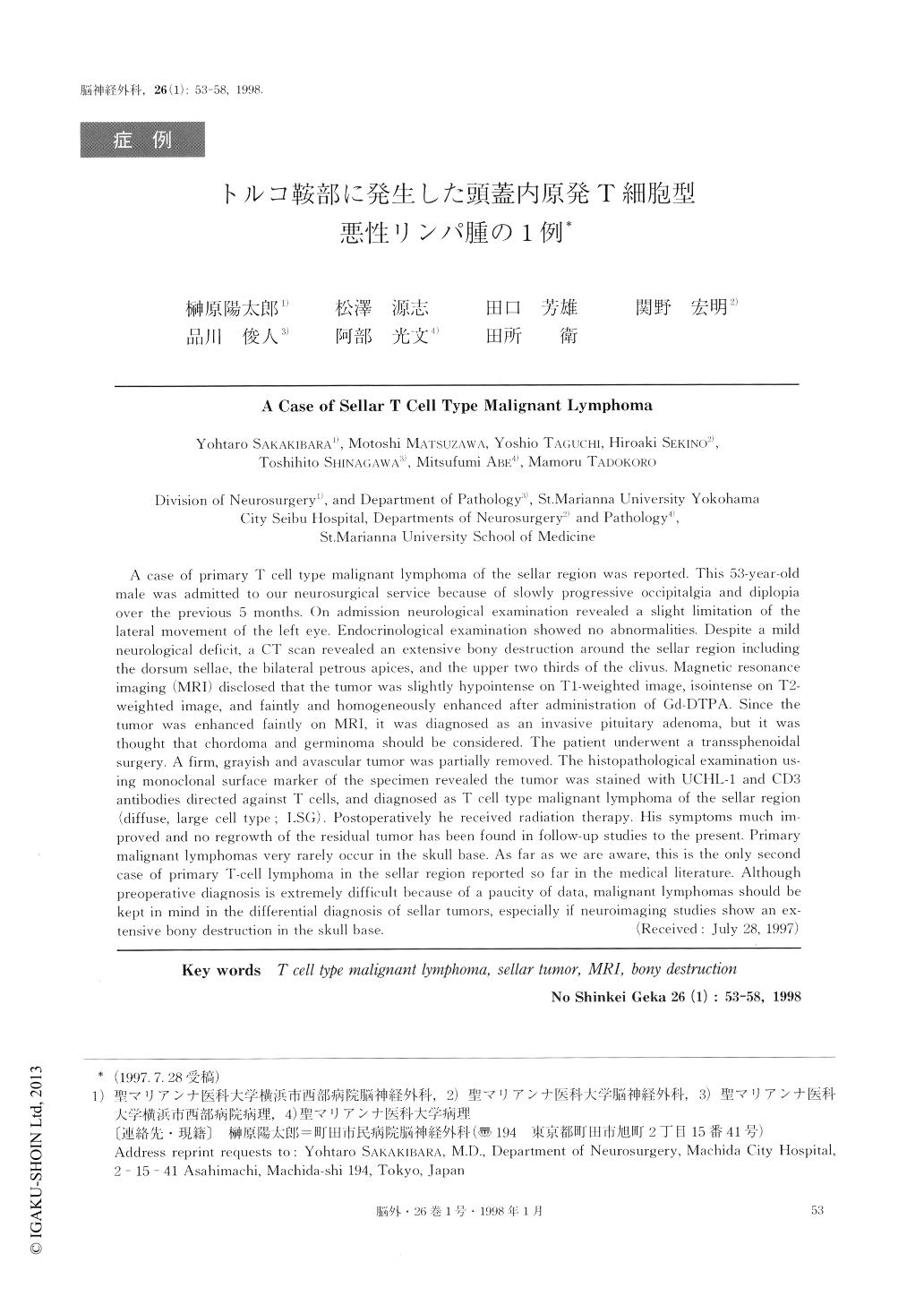Japanese
English
- 有料閲覧
- Abstract 文献概要
- 1ページ目 Look Inside
I.はじめに
免疫抑制剤の使用が不可欠な臓器移植患者やAIDS患者などの増加に伴い,頭蓋内原発悪性リンパ腫の頻度は上昇してきている2).免疫組織学的には,これらの大多数はB細胞型で,T細胞型は非常に稀である2,7).
われわれは,トルコ鞍部に発生し広範な骨破壊を示したT細胞型悪性リンパ腫を経験した.頭蓋底部リンパ腫は,大部分が転移性3,11)で,自験例のような原発性は極めて稀であり,術前得られたMR面像を中心に本例を呈示し,その画像所見および臨床症状の特徴について若干の文献的考察を加えて報告する.
A case of primary T cell type malignant lymphoma of the sellar region was reported. This 53-year-oldmale was admitted to our neurosurgical service because of slowly progressive occipitalgia and diplopiaover the previous 5 months. On admission neurological examination revealed a slight limitation of thelateral movement of the left eye. Endocrinological examination showed no abnormalities. Despite a mildneurological deficit, a CT scan revealed an extensive bony destruction around the sellar region includingthe dorsum sellae, the bilateral petrous apices, and the upper two thirds of the clivus. Magnetic resonanceimaging (MRI) disclosed that the tumor was slightly hypointense on T1-weighted image, isointense on T2-weighted image, and faintly and homogeneously enhanced after administration of Gd-DTPA. Since thetumor was enhanced faintly on MRI, it was diagnosed as an invasive pituitary adenoma, but it wasthought that chordoma and germinoma should he considered. The patient underwent a transsphenoidalsurgery. A firm, grayish and avascular tumor was partially removed. The histopathological examination us-ing monoclonal surface marker of the specimen revealed the tumor was stained with UCHL-1 and CD3antibodies directed against T cells, and diagnosed as T cell type malignant lymphoma of the sellar region(diffuse, large cell type; LSG). Postoperatively he received radiation therapy. His symptoms much im-proved and no regrowth of the residual tumor has been found in follow-up studies to the present. Primarymalignant lymphomas very rarely occur in the skull base. As far as we are aware, this is the only secondcase of primary T-cell lymphoma in the sellar region reported so far in the medical literature. Althoughpreoperative diagnosis is extremely difficult because of a paucity of data, malignant lymphomas should bekept in mind in the differential diagnosis of sellar tumors, especially if neuroimaging studies show an ex-tensive bony destruction in the skull base.

Copyright © 1998, Igaku-Shoin Ltd. All rights reserved.


